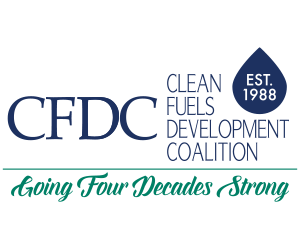SAFE Rule Proposal Unleashes Wave of Comments to EPA
Experts Warn Health Impacts Not Accounted For, Urge Higher Octane Fuels
August 30, 2021: A wide range of stakeholders responded strongly to a proposed rulemaking to tighten vehicle emissions by applauding the action but warning of near term health risks that must be addressed in the final rule.
Several organizations and individuals from the ethanol, auto, and climate sectors told the U.S. Environmental Protection Agency (EPA) that the failure to adopt a strategy and pathway to higher octane low carbon fuels will result in the 270 million cars on the road today continuing to emit not just greenhouse gases but also highly toxic particulates.
Clean Fuels Development Coalition Executive Director Doug Durante said the evidence is overwhelming that EPA is not only obligated but required to reduce toxic emissions from gasoline as a key consideration of any ghg strategy. In addition to CFDC’s comments, the High Octane Low Carbon Alliance (HOLC Alliance) , Chaired by former Senate Majority Leader Tom Daschle, submitted extensive comments. HOLC Alliance members include CFDC, the Renewable Fuels Association, the National Corn Growers Association, and the National Farmers Union.
In transmitting the HOLC Alliance comments, Senator Daschle said “For as long as internal combustion engines remain on the road during the next 30 years, high octane, low carbon fuels will be needed, delivering significant reductions in carbon emissions today and providing a critical bridge to an electrified future.”
Other notable comments included individual submissions by CFDC Advisory Committee Members Reg Modlin, former Chrysler Director of Regulatory Affairs and Reid Detchon, former DOE official, now a senior climate advisor to the United Nations Foundation. Detchon and Modlin said that “adoption of an improved fuel could possibly double the CO2 reductions claimed by the Proposed Rule” because HOLC Fuels could reduce GHG emissions from the existing LDV fleet by more than 120 million tons annually.
All these points have been endorsed by the auto industry, notably the Alliance for Automotive Innovation (AAI) which counts as its members the manufacturers of 99% of the light duty vehicles on the road to day. In their comments, AAI called for higher octane gasoline, a low carbon fuel standard, and increased regulations and limitations aromatics and other air toxics.
“This should be a wake up call for EPA that we have an opportunity now, not decades in the future, to protect public health in addition to tackling climate change,” said Durante, adding that the CFDC comments include a detailed Regulatory Roadmap for EPA to open the market to low carbon ethanol.
In addition, a new study published by Transport Energy Strategies (TES), a leading energy consultancy with expertise in emissions, fuel and oil refining concluded that by accounting for the replacement of aromatics in gasoline, ethanol blends lower carbon intensity even more than what is modeled today.
For Further Information Contact: Doug Durante, cfdcinc@aol.com
